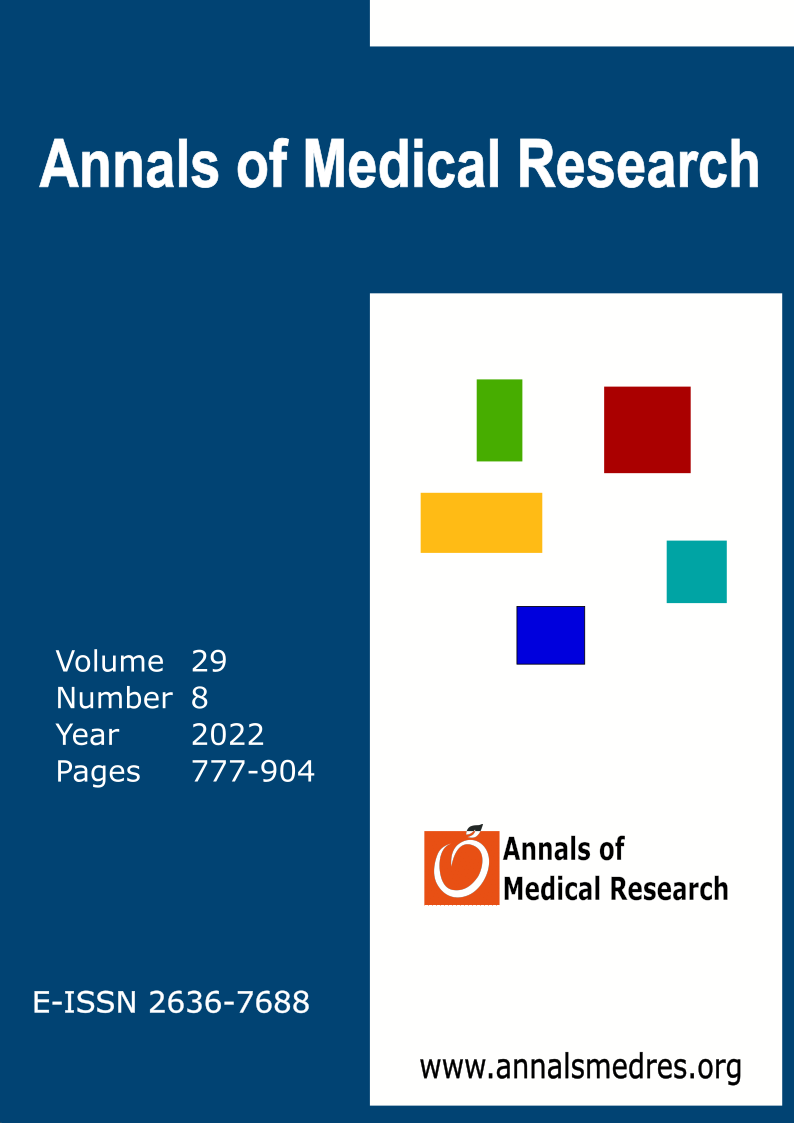Effects of cerclage suture type on pregnancy and neonatal results: Mersilene suture &prolene suture
Keywords:
Cerclage suture, Preterm birth prevention, Short cervical length, Mersilene, MonofilamentAbstract
Aim: The aim of this study is to compare pregnancy and neonatal results with regards to the thickness of the suture material used in the transvaginal cerclage operation.
Materials and Methods: Patients who were subject to transvaginal cervical cerclage due to cervical insufficiency were evaluated in a secondary care center between 2103 and 2021 retrospectively. The demographic data, cerclage indications (ultrasound induced, prophylactic, or physical examination induced), number of pregnancy weeks at cerclage, type of cerclage suture (prolene, mersilene), type of cerclage (McDonald, Shirodkar), total pregnancy weeks, delivery method (cesarean (C/S), normal spontaneous vaginal delivery) of each patient were recorded. Additionally, birth weight, 1st and 5th minute APGAR scores, and neonatal intensive care unit (NICU) requirements were recorded as neonatal parameters. Patients were divided into two groups with regard to the type of cerclage suture (mersilene or prolene) and maternal, neonatal and pregnancy results were compared between these groups.
Results: The study included 151 patients in total. Prolene sutures were used for 69 of the patients (45.7%) and mersilene sutures for 82 patients (54.3%) Cerclage was applied for 18 patients (11.9%) depending on the ultrasound findings, 121 patients (80.1%) depending on emergency and 12 patients (7.9%) depending on history. Gravida increased significantly in the prolene suture group (p=0.021). Pregnancy week was found to be significantly lower in the mersilene suture group [32.5 w (15-40)] compared to the prolene suture group [37.0 w (15-41)] [37.0 w (15-41)](p<0.001). Ratios of birthing below 34 weeks and 37 weeks for the mersilene suture group were found as 57.3% and 80.5%, and for the prolene suture group 11.6% and 40.6% respectively, and a statistically significant difference was observed (p<0.001). Fetal weight, 1st and 5th minute APGAR scores in the mersilene suture group were significantly lower (p<0.05). Ratios of newborn intensive care requirements and preterm premature rupture of membranes (PPROM) in the mersilene suture group were found to be significantly higher compared to the prolene suture group (p=0.016, p<0.001 respectively).
Conclusion: Although mersilene suture is more preferred, its supply is not always possible in emergency situations. Therefore, the prolene suture should be kept in mind as an even stronger cerclage suture option.
Downloads
Published
Issue
Section
License
Copyright (c) 2022 The author(s)

This work is licensed under a Creative Commons Attribution-NonCommercial-NoDerivatives 4.0 International License.
CC Attribution-NonCommercial-NoDerivatives 4.0






